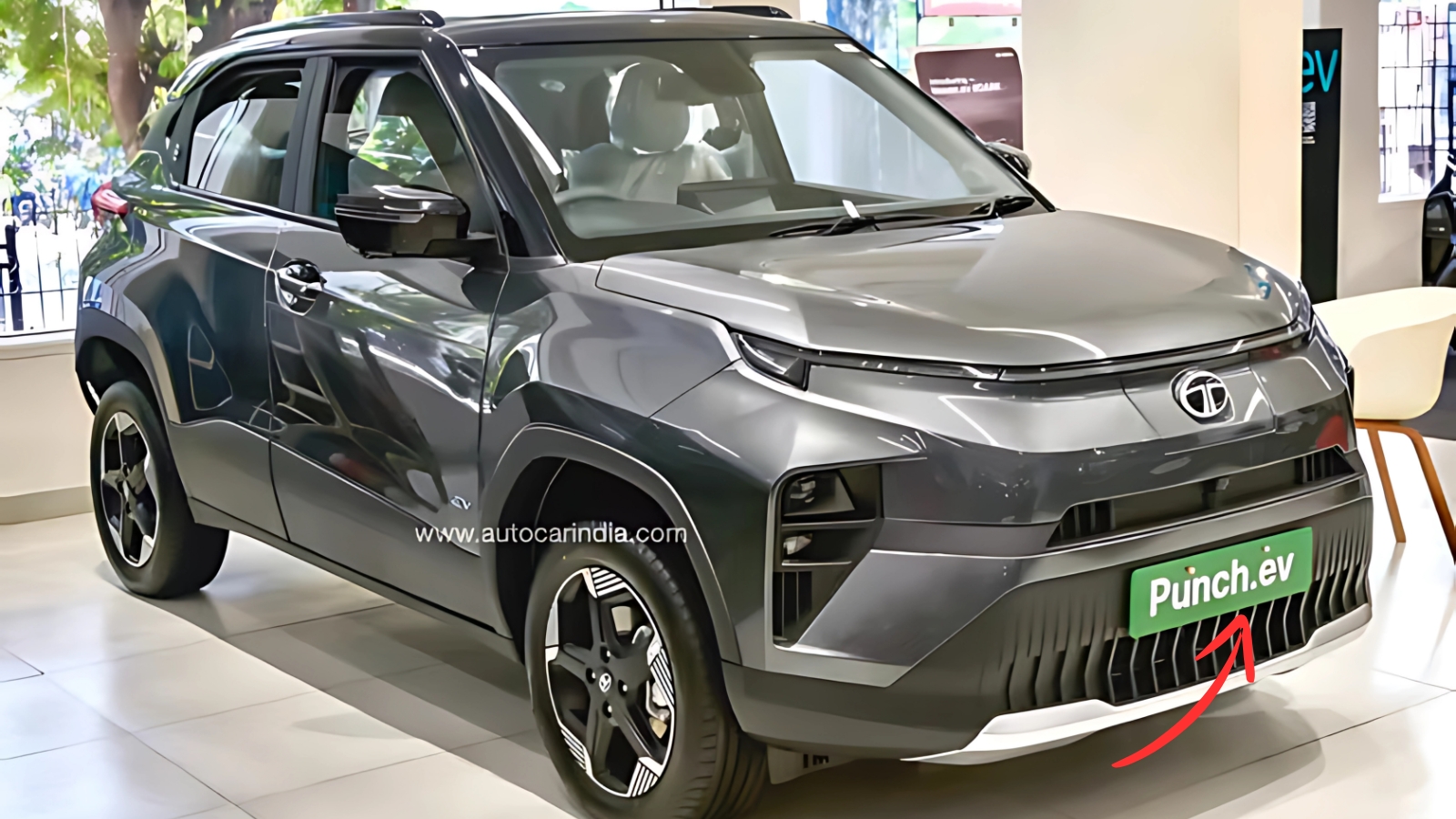Tata Punch EV : The compact SUV segment in India just got a massive shake-up. Tata Motors has taken their wildly successful Punch and given it the full electric treatment, creating something that’s turning heads from Mumbai’s busy streets to Delhi’s wide highways. This isn’t just another car with batteries – it’s a complete rethinking of what affordable electric mobility can look like in India.
Engineering Excellence Meets Practical Design
What strikes you first about the Punch EV is how different it looks from its petrol sibling. The designers haven’t just slapped some blue badges on the original and called it electric. Instead, there’s a completely redesigned front end with a closed grille that makes aerodynamic sense, plus those distinctive LED light bars that give it a properly futuristic appearance.
The engineering team built this on Tata’s dedicated Acti.ev platform, which sounds technical but basically means they designed everything from scratch to work perfectly with electric power. The weight distribution is completely different, the cooling systems are optimized for batteries instead of engines, and every panel has been tweaked to slip through the air more efficiently.
Walking around the vehicle, you notice subtle changes everywhere. The charging port sits prominently at the front, the wheels have that distinctive aero design, and there’s a confidence in the stance that suggests this car knows exactly what it’s supposed to be.

Two Batteries, Multiple Possibilities
Here’s where Tata got really smart about customer choice. Instead of forcing everyone into a one-size-fits-all solution, they’re offering two completely different battery setups. The smaller 25 kWh pack gives you 315 kilometers of range and costs less upfront. Perfect if you’re mainly driving around town and want to dip your toes into the EV world without breaking the bank.
The bigger 35 kWh option stretches that range to 421 kilometers, which changes everything about how you can use this car. Suddenly you’re looking at weekend trips to hill stations, visits to relatives in other cities, and the kind of flexibility that makes electric feel like a genuine alternative rather than a compromise.
Both versions support proper fast charging too. Plug into a 50 kW DC charger and you’ll go from nearly empty to 80% charged in under an hour. That’s coffee break territory, not overnight waiting.
Technology That Actually Makes Sense
Step inside and you’re immediately confronted by twin 10.25-inch screens. One handles all your entertainment and navigation needs, while the other replaces traditional gauges with crisp digital displays. Everything connects wirelessly to your phone, supports voice commands in multiple languages, and responds quickly enough that you don’t feel like you’re fighting with the technology.
The safety equipment list reads like something from a much more expensive car. You get a 360-degree camera system for parking, blind spot monitoring for highway driving, and electronic stability control that constantly adjusts power delivery to keep everything pointing in the right direction.
Market Reality Check
At ₹9.99 lakh for the entry-level version, this isn’t exactly budget territory, but it’s competitive when you consider what you’re getting. Traditional petrol SUVs at similar prices don’t offer anywhere near this level of technology or refinement. Meanwhile, other electric options either cost significantly more or compromise heavily on range and features.
The real genius is in the positioning. Tata isn’t trying to sell this as a luxury item for early adopters. Instead, they’re presenting it as a practical choice for families who want something better than what they currently drive.
Real-World Success
The numbers tell an interesting story. In June 2025 alone, the combined Punch lineup sold 10,446 units, proving that Indian buyers are ready for electric when it makes practical sense. This isn’t just environmental enthusiasm – people are making rational decisions about running costs, maintenance requirements, and daily usability.
Tata Punch EV The Bigger Picture
What makes the Punch EV genuinely important isn’t its specification sheet or feature list. It’s the demonstration that electric vehicles can work for regular Indian families without requiring massive lifestyle changes or financial sacrifices. As charging infrastructure improves and battery technology advances, cars like this will likely be remembered as the moment when electric stopped being exotic and started being normal.
The Punch EV proves that the future of Indian mobility isn’t just coming – it’s already here, and it’s more accessible than anyone expected.
